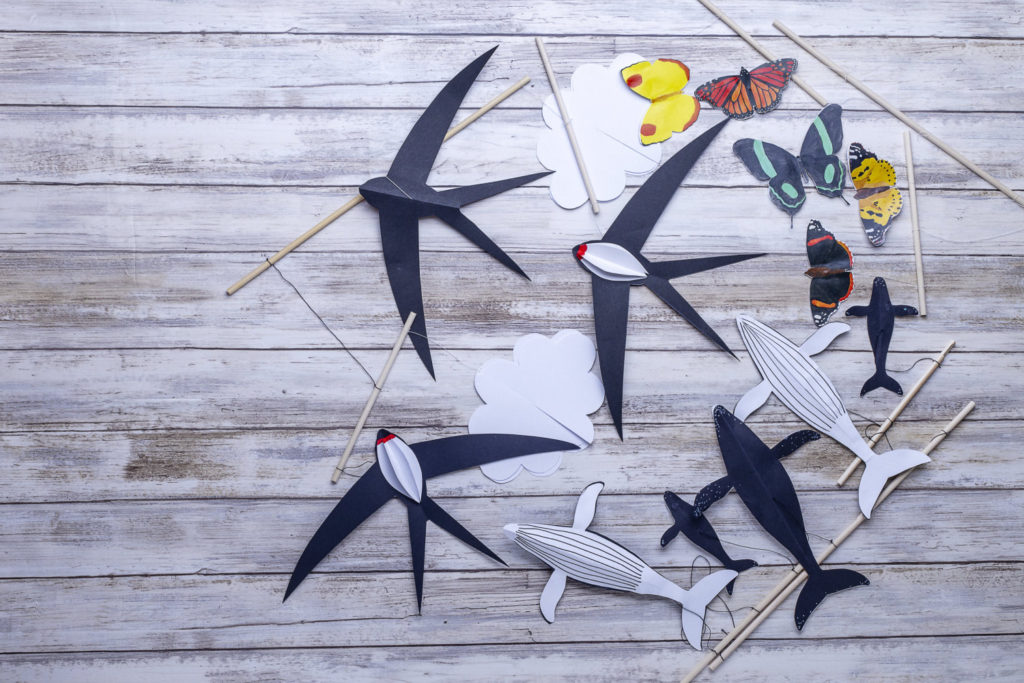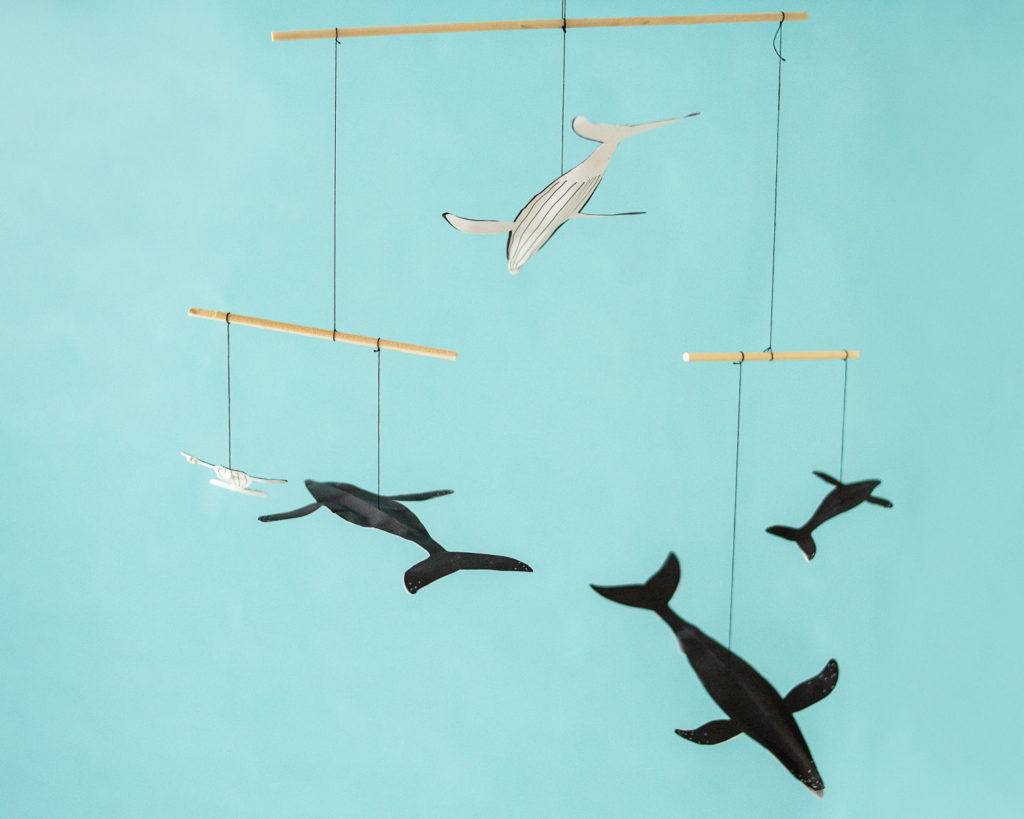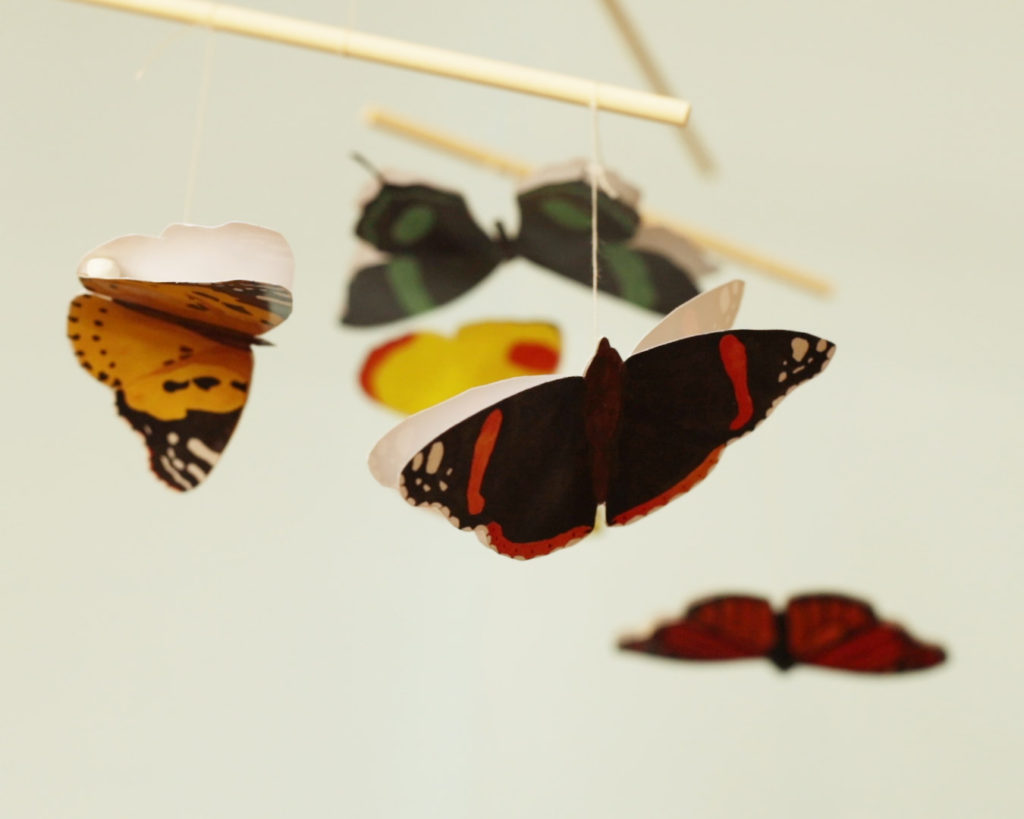So your baby has worked her way through the first four traditional Montessori mobiles. Great job for both of you! But what now? Eye sight makes an enormous progress from only being able to see the Munari mobile‘s close, high-contrast objects to being able to follow the Dancers‘ dancing figures, its development does not stop here. The most basic skills have been achieved with hard, focused work, now they need opportunities for refining them. Ladies and Gentlemen, allow me to introduce you the world of the Montessori Animal Mobiles.

WHAT ARE MONTESSORI ANIMAL MOBILES?
Simplicity
These mobiles all have a few aspects that are important in Maria Montessori’s education. They all have the maximum of five elements, so that your baby’s developing visual skills will not be overwhelmed when observing them.
Isolation
Similarly to other Montessori materials, their aim is to isolate one sense, so that your baby can give it their full attention, without anything disrupting the child’s ‘work’. What does this mean exactly? They don’t make any sound, they (it’s kinda obvious, but) don’t smell. They are only meant to me watched and not touched, which is also an important safety measure. By this age, babies are working on making their involuntary movements voluntary. In order to avoid them catching an element and putting it in their mouth, make sure that the mobile hangs above their chest and the lowest element is at 30 cm/12 inches away from their chest.
Realism
The other important point is that, as much as possible, they offer concrete, real images for your little one. Even the motion of the elements mirror the way the living counterparts move, which is flying through the air or swimming in the water. This is the reason for the animals being birds, insects or marine animals.
WHAT IS THE SEQUENCE OF THE MONTESSORI ANIMAL MOBILES?
There is none! They are not progressive, like the traditional mobiles (Munari, Octahedron, Gobbi, Dancers). They can be used alongside each other. Generally speaking, you change them weekly or when you see that your baby’s interest changes. However, as we know, every baby is different so observe your little one and when you see that s/he is ready to move to another mobile, change to the next one.
The Montessori Whale mobile
Having said that, I would start with the Whale mobile, simply because it has high-contrast, black and white colours. There is a lot going on in this mobile! The three adult whales and the two calves are all hanging in different heights and they have different sizes. This encourages your baby to work their depth and size perception. Even without the addition of colours, it provides enough age-appropriate challenge to refine the sense of sight, but without overwhelming it. Read more about it in this post.

The Montessori Swallows Mobile
This simple but very eye-catching mobile offers everything the Whales does plus more! The little red dot at the end of the head, which represents the beak, focuses your baby’s attention, thus building concentration. The two clouds on the top part of the mobile help to recreate the likeness of three swallows flying in the sky. I think this is a gorgeous image to present to your baby. Read more about it in this post.

Another version of the bird mobile is the Seagull mobile, which is also predominantly high-contrast but with a few little colourful details to encourage longer observation time.

The Montessori Butterfly mobile
This is the last and the most stunning mobile in the Montessori Animal mobile series. This lovely, colourful mobile depicts butterflies that are found in nature, to offer concrete images to your little one. I often suggest that this mobile should be used outside as the gentle breeze can make them move in a whimsical way, which depict the way real butterflies would move above a sunny meadow.
After the big, simple, black and white elements of the Swallows mobile the bold colours of these lovely, small insects provides a great visual challenge. They all conspire to capture your baby’s attention and to motivate concentration for a long period of time. It assist in practising height-, size- and colour-discrimination. Read more about it in this post.

FINAL THOUGHTS
The Montessori Animal Mobiles are the perfect tools to refine your baby’s ever-developing visual skills. Maria Montessori believed that what your little one sees in the first months of their life can have a long-lasting effect in the future. Together with the previous four traditional ones, the animal mobiles offer the full scope of visual skills a baby can achieve by the age of approximately 6 months (every baby develops in their own pace). Why not head over to my Shop and buy the resources for them individually, or all at once.
And what comes after? Head over the next blog post, which introduces the Montessori Tactile Mobiles.
Click on the links to read more about how the Montessori Visual Mobiles, the Montessori Tactile Mobiles or the Sensory Baby Play help your baby’s development.
How did your baby react to this mobile? Please share your photos on my Instagram site. #montessoriedited, @montessoriedited
